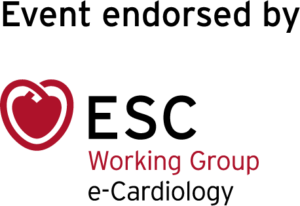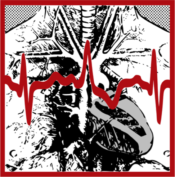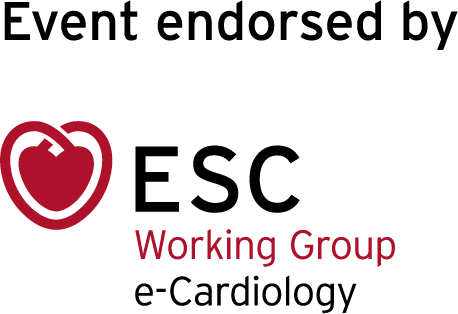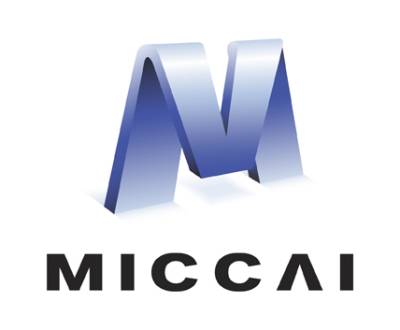Joint WG e-Cardiology ESC – CinC: Clinical Needs Translational Award (CTA)
1 – About the Programme
1.0 – What’s it all about?
This award represents a joint initiative between the Working Group on e-Cardiology of the European Society of Cardiology (ESC) and CinC, and it is designed with the aim of promoting and further stimulating the translational component of CinC research to clinical needs. You can find below the requirements for the proof of eligibility, details of the review process and the steps to enter the CTA competition.
Of most importance is the fact that you have to submit a full paper (4 pages) by the time of the abstract deadline (together with an abstract and proof of eligibility).
A panel composed of researchers with a clinically oriented profile will assess the submitted papers and choose the winner. A member of the winning team will have to present the paper at the Plenary session on the last day of the conference.
A cheque (US$500 + € 500) will be given to the winning team at the closing plenary session, together with a commemorative diploma for each member. Also, the winning abstract and team will be acknowledged in the ESC Working Group on e-Cardiology website and newsletter, and during the ESC Working Groups Award Ceremony & Networking Reception at the annual ESC conference.
1.1 – Working Group on e-Cardiology – European Society of Cardiology (ESC)
The ESC Working Group on e-Cardiology covers the wide area of specialized computer methods in cardiovascular image and signal processing, computational knowledge discovery, artificial intelligence, predictive modelling, remote monitoring, e-health and mobile applications, and big data analytics. It represents an opportunity for cardiologists and scientists from various fields to interact on new topics and new applications of information technology in cardiology. The Working Group welcomes suggestions for support and scientific endorsement of consensus documents, standardization reviews, focused seminars and meetings, professional collaboration and exchange programs.
1.2 – The Aim of the Programme
This award programme is designed to encourage participation of multidisciplinary research teams, with emphasis on the potential clinical applicability and impact of the research.
Details of previous recipients of the award:
|
2023: Michele Orini, Stefan van Duijvenboden, Julia Ramírez, Will Young, Andrew Tinker, Patricia Munroe and Pier Lambiase, “Ultra-Short Beat-to-Beat Repolarization Variability Predicts Cardiovascular Events in Individuals Without Cardiovascular Disease“ |
|
2022: Mohamadamin Forouzandehmehr, Michelangelo Paci, Jussi Koivumäki and Jari Hyttinen, “Mutation-specific hypertrophic cardiomyopathy and Mavacamten: a mechano-energetic in silico study” |
|
2021: Deborah Nairn, Claudia Nagel, Björn Müller-Edenborn, Heiko Lehrmann, Thomas Arentz, Olaf Doessel, Amir Jadidi, Axel Loewe, “Optimal Regional Voltage Thresholds for Identifying Ablation Targets in Patients with Atrial Fibrillation” |
|
2020: Sara Moccia, Alessandro Cagnoli, Chiara Martini, Giuseppe Moscogiuri, Mauro Pepi, Emanuele Frontoni, Gianluca Pontone and Enrico Caiani “A novel approach based on spatio-temporal features and Random Forest for scar detection using cine cardiac magnetic resonance images” |
|
2019: Flavio Palmieri, Pedro Gomis, José Esteban Ruiz, Beatriz Bergasa, Ferreira Dina, Alba Martin, Syed Hassaan Ahamed, Esther Pueyo, Juan Pablo Martínez, Julia Ramírez and Pablo Laguna “T-Wave Morphology Changes as Surrogate for Blood Potassium Concentration in Hemodialysis Patients” |
|
2018: Julia Ramírez*, Stefan van Duijvenboden, Pablo Laguna, Esther Pueyo, Andrew Tinker, Pier Lambiase, Patricia Munroe, Michele Orini “Assessing a Warping Methodology for the Identification of Increased Cardiovascular Risk Based on the HR Profile Morphology” |
|
2017: Filip Plesinger, Pavel Jurak, Josef Halamek, Pavel Leinveber, Scott McNitt, Jean Philippe Couderc “The dyssynchrony meter – A new tool to measure the ventricular conduction abnormalities in heart failure patients” |
|
2016: Matthijs Cluitmans (Maastricht)*, Jaume Coll-Font, Burak Erem, Dana Brooks, Pietro Bonizzi, Joël Karel, Paul Volders, Ralf Peeters and Ronald Westra “Spatiotemporal Activation Time Estimation Improves Noninvasive Localization of Cardiac Electrical Activity”. |
2 – Eligibility
There is no conflict between the YIA and CTA as the first author could, if desired, participate in the YIA competition, if eligible as a young researcher, and be part of the research team entering the CTA.
Together with the 4-pages submission, a statement is required from the corresponding author to confirm the willingness to participate to the CinC conference by at least one team member, as a condition to potentially receive the Award and to present the work in the Plenary session. Moreover, a statement is required indicating each author’s contribution to the work, and the fact that it is original and has not been yet published or presented in international conferences at the date of submission.
2.1 – Submission in Successive Years
If you have previously submitted a paper for the CTA competition, but did not win, it is allowable to resubmit an updated paper or a paper on a different topic. Often the work presented is in progress, and may benefit from further data collection or in general from further maturation.
3 – Entering the CTA Competition
3.1 – First Steps
Please consider applying for a visa on time if you are the team member that is planning to attend CinC. Don’t put off this crucial step! If you wait until you have been notified that your paper has been accepted, you may not have enough time to get a visa if you need one.
Consult the Call for Papers for this year’s CinC conference to verify the abstract deadline, usually 15 April.
Submitting a properly formatted abstract or paper is easy and usually trouble-free, but don’t risk missing the deadline because of unfamiliarity with the formatting requirements or the submission process. Since you may revise your submissions at any time before the abstract deadline, test the process by submitting early drafts of your conference program abstract and of your full paper (see 3.3 below) to avoid last-minute surprises.
3.2 – Required Elements for a CTA Submission
ELIGIBILITY STATEMENT
Your submission is not complete without the statements described above (see point 2) from the corresponding author. It should be printed on the official letterhead of your institution and must be submitted together with your conference program abstract and your full paper.
CONFERENCE PROGRAM ABSTRACT
In order to allow electronic processing, the abstract to be printed in the conference program must be submitted via the CinC abstract and paper collection site according to a predefined format. For details, see these instructions for preparing and submitting CinC abstracts.
FULL PAPER
CTA applicants must submit a full paper in the same format as required for the conference proceedings. This includes a short abstract (see 3.4). For details, see these instructions for preparing and submitting CinC papers.
3.3 – Submit All THREE Required Elements Before the Abstract Deadline
It is necessary to submit a full paper including a short summary/abstract at the beginning (for publication in the CinC proceedings), and in addition to submit a separate (usually longer) abstract (for publication in the conference program book distributed to attendees). The conference program abstract should meet the rules for the normal abstract submission and is different from the short summary/abstract at the start of the paper (see 3.4).
Once again, submissions for the CTA that do not include all three of these required elements:
- eligibility statement (see point 2)
- a conference program abstract
- a full paper
will not be considered!
The full papers are sent to the CTA panel jury and are reviewed before the abstract review meeting and before the final conference program is arranged. The winner paper will be chosen based on the quality and content of the papers, and will be presented in the plenary session on the last day of the conference by a member (presenting co-author) of the winner team.
If you are not selected as the winner, your abstract will be reviewed together with all of the other abstracts submitted to CinC. If it is accepted, it will be assigned to a parallel or poster session. Note that the abstract reviewers will not usually have read your full paper, so it is important that the abstract stand on its own as a summary of your work.
3.4 – Is the Conference Abstract the Same as the Abstract in the Designated Slot at the Top of the Paper?
No! The abstract at the top of the paper is just a short summary of the content (at most, about 150 words). The conference abstract, on the contrary, should contain enough information to let the abstract reviewers (and eventually, other attendees) understand your work and should effectively be a small, self-contained paper (of up to 300 words) with methods, results and real data.
3.5 – How Strict Is the Page Limit for the Full Paper?
It is absolutely essential to adhere to the limit of 4 pages. A paper that does not comply with this rule will not be accepted.
3.6 – May I Submit More than One Paper to the CTA Competition?
Yes. As this is the first year for this award, at the moment there is no limit in the number of papers that can be submitted to this competition.
3.7 – Do CTA Participants Qualify for a Reduced Registration Fee for the Conference?
No.
3.8 – If I Still Have a Question, How Can I Inquire?
Please contact the Board member responsible for ESC/CTA (esc@cinc.org).
4 – The Selection Process
4.1 – Selection of the Winning paper
Each paper will be read and ranked by each member of the Panel jury before the abstract selection meeting. The Panel usually consists of the Chairman of the ESC WG e-Cardiology (that act as the Chair of the CTA Panel Jury), the President of Computing in Cardiology, and at least five researchers with a clinically oriented profile chosen by the Chairman of the ESC WG e-Cardiology, that have no relation with any of the submitted papers. Based on the obtained ranks, the winning paper will be selected and an oral presentation will be scheduled during the plenary session the last day of the conference.
4.2 – Notification of Results
If you have entered the CTA competition, you will, of course, receive an e-mail from the Organizing Committee notifying you of the acceptance/rejection of your abstract for presentation at the conference. The CTA Chair will notify the corresponding authors separately by e-mail about the status of the CTA paper as soon as possible after the final program is planned. In broad terms, all CTA applicants will be advised of the outcome by early June. The corresponding author of the winning paper will have to confirm the name of the selected co-author for giving the presentation during CinC.
4.3 – If a CTA Paper Is Not Accepted as a Winner, Is It Still Considered for the Conference?
Yes! As mentioned above, the reviews of the full paper for the CTA competition and of the conference program abstract for the regular sessions of the conference follow different routes.
4.4 – Will My Accepted Paper be Published?
If you present your paper at CinC, whether as a CTA winner or not, it will be published. Papers that are not presented are not published in any case.
All accepted papers receive editorial review, and you should be prepared during the month after the conference to make corrections if requested by the Editor to do so.
4.5 – May I Revise My Accepted Paper?
You may revise your paper at any time after it has been accepted, until the final paper deadline (usually a week before the conference begins in September). Many authors use this opportunity to improve the style and the language, remove errors, and even add more data. If you were selected as a winner, however, keep in mind that your original paper was the basis for the decision; don’t abuse your freedom to revise it. If you were not selected as the winner, your inclusion in the program is based on your abstract only, so you may rewrite the paper completely if you wish.
5 – The Presentation
5.1 – When Will the presentation of the CTA awarded paper Take Place?
The presentation of the winner of the CTA award is scheduled for the last day of the conference (usually Wednesday).
5.2 – How Much Time Do I Have for the Final Presentation?
The presentation of the winning paper of the CTA award will be allocated 15 minutes, plus 5 minutes for the discussion. Please note that this is different from all the other sessions, where only 10 minutes are allocated for the presentation.
5.3 – How Important Is the Presentation vs. the Written Paper?
As the final decision is made by the Panel jury based only on the written paper, the presentation has the only aim to give visibility to the audience about the content of the winning study.
5.4 – Will There Be Questions from the Floor?
Of course! As every paper in CinC, time will be allocated for questions from the floor.
6 – Awarding
6.1 – When Will the Winner Be Announced? What Is the Prize?
The winning team will be acknowledged in the final program, and oral presentation inserted during the plenary session in the last day of the conference. At the end of this session, the winning team will receive from the Chairperson of the ESC WG e-Cardiology a monetary award (US$500 + € 500), and a diploma.
6.2 – Additional Acknowledgement
Acknowledgement of the winning team will be given both by publication on the WG e-Cardiology website (click here) and by an announcement during the General Assembly of the WG e-Cardiology during the next annual ESC conference (click here).


